There are about 300 varieties of woodpeckers across the globe, with around 22 of them located in The USA. There are eight varieties of woodpeckers throughout South Carolina out of the 22 kinds.
Many of these eight species are year-round inhabitants of South Carolina, whereas others visit on occasion. A great number of woodpeckers may be found in South Carolina, regardless of where you reside.
Nature enthusiasts of all generations will appreciate wandering through the South Carolina woodlands and seeing wildlife in its native environment, which includes 424 bird species, four of which have been extinct.
Amateur and experienced birdwatchers will equally enjoy looking for the eight species of woodpeckers that consider South Carolina their homeland.
In this article, eight species of woodpeckers found around South Carolina will be discussed.
| Image | Name |
|---|---|
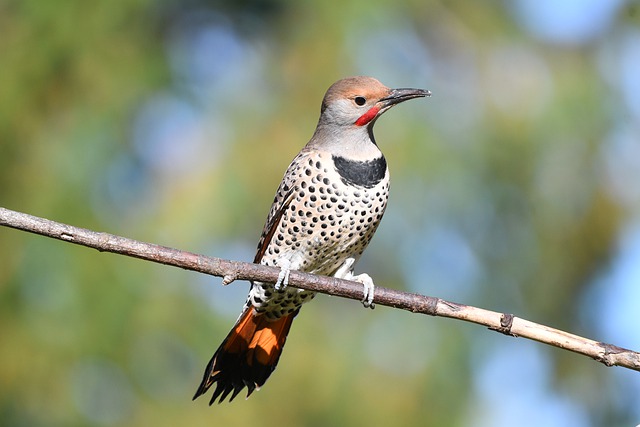 | Northern Flicker |
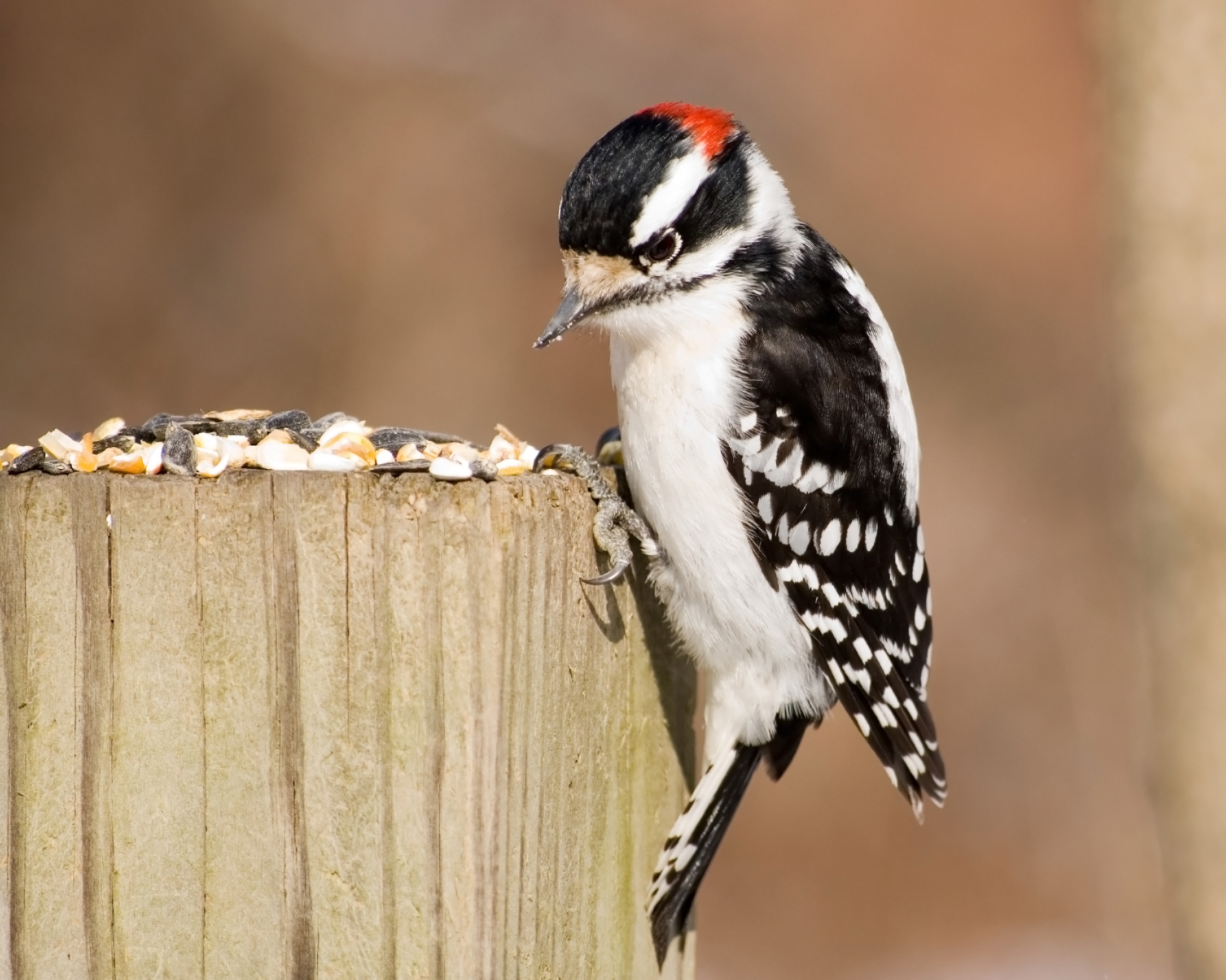 | Downy Woodpecker |
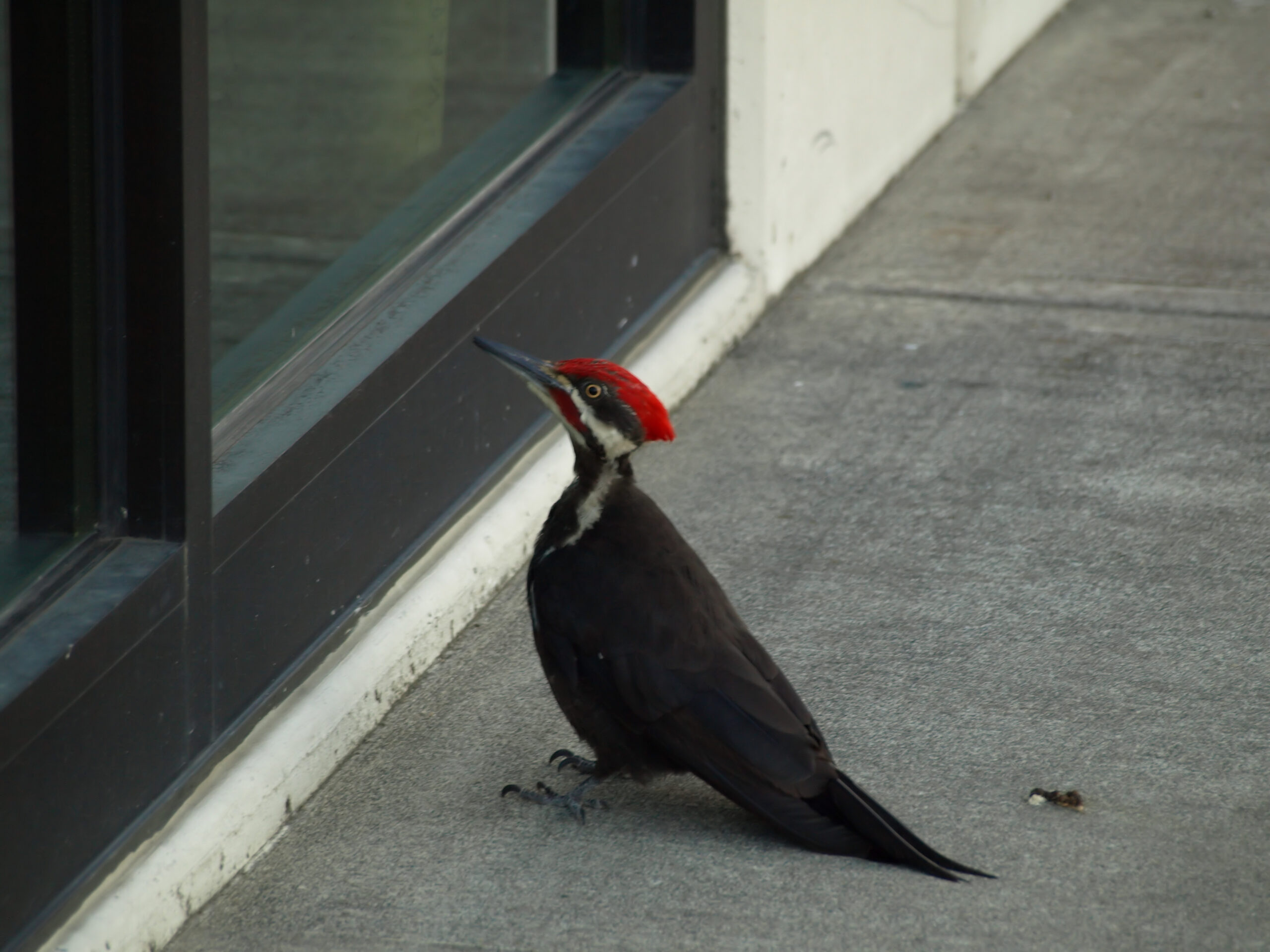 | Pileated Woodpecker |
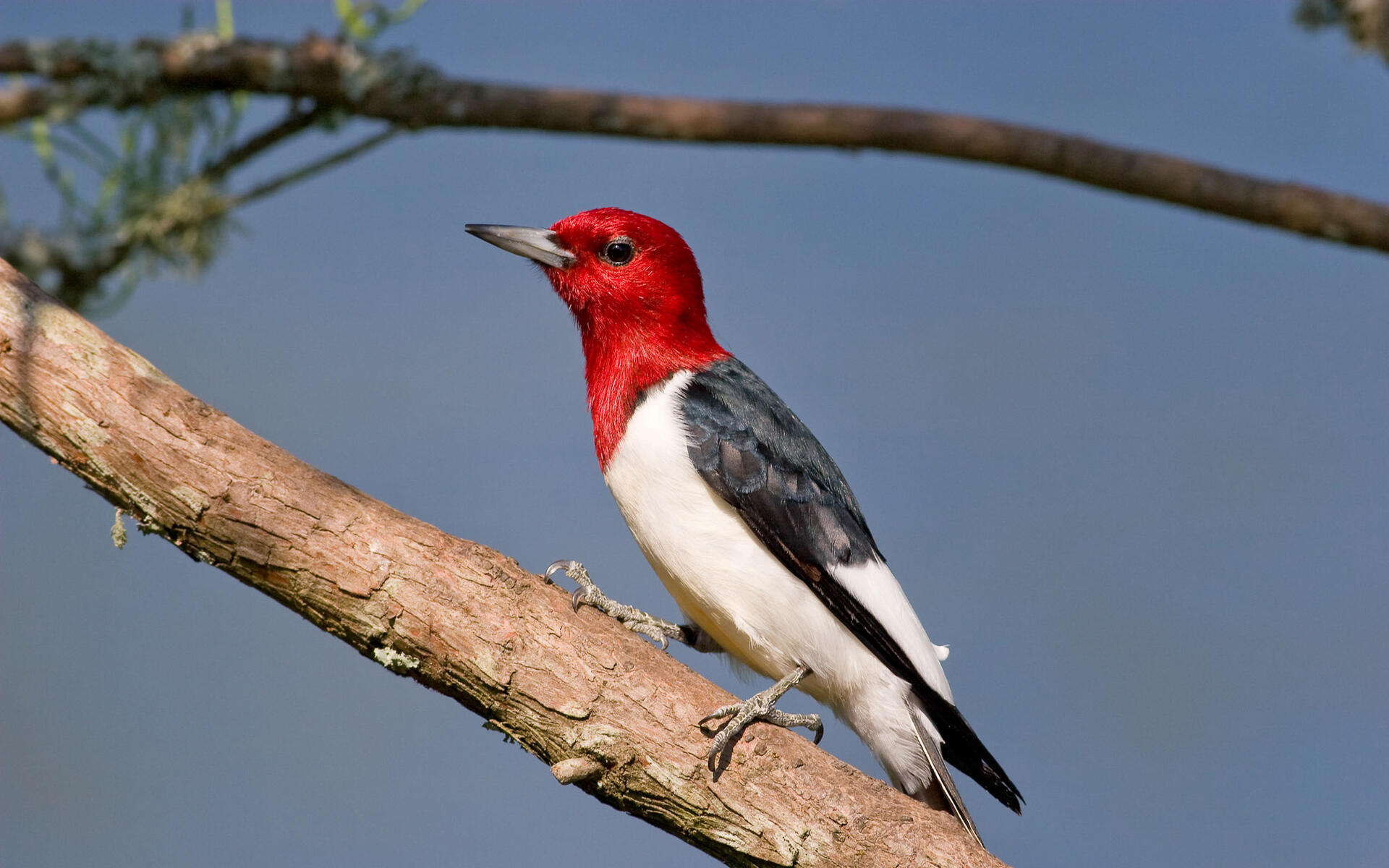 | Red-Headed Woodpecker |
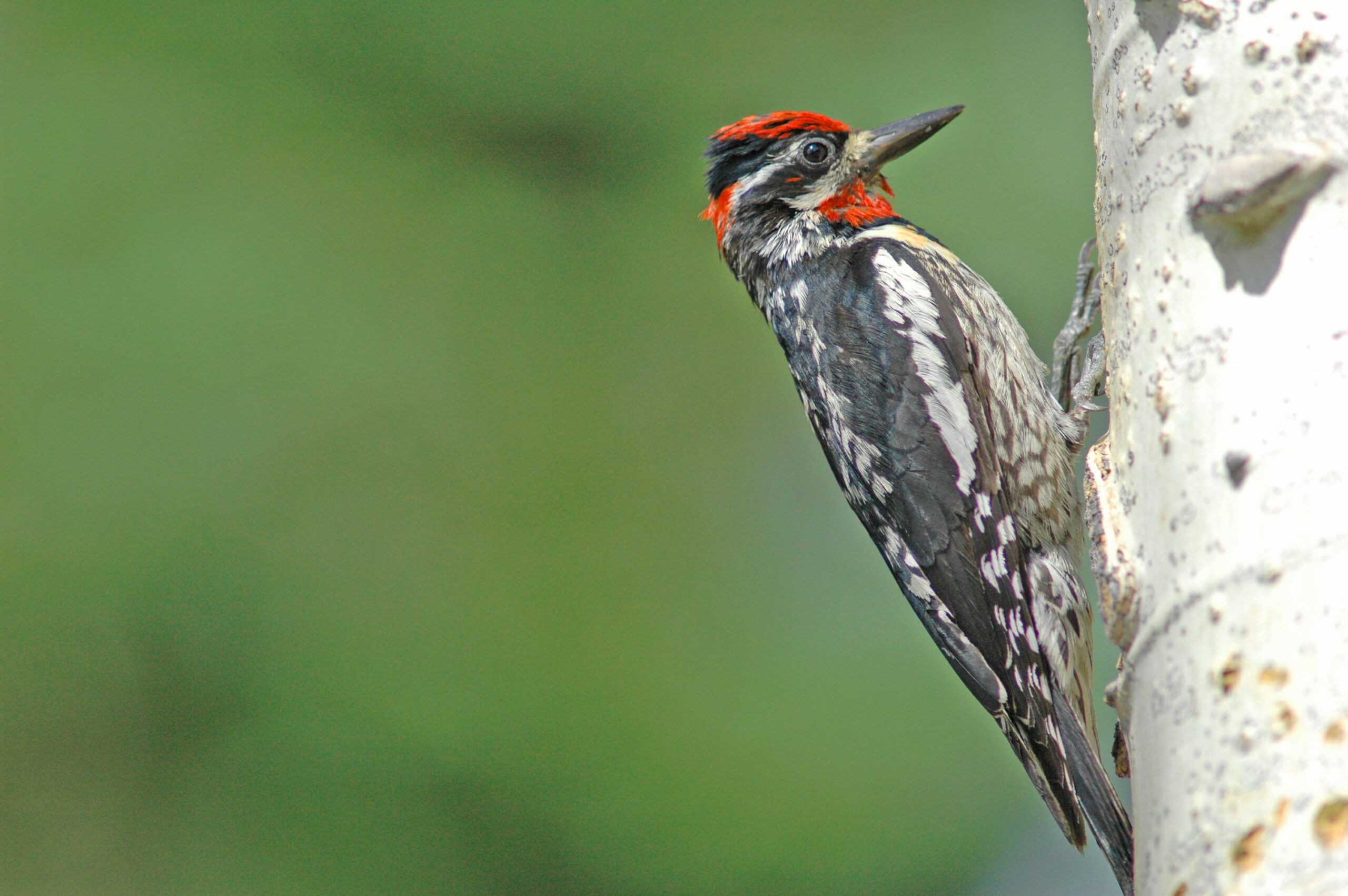 | Yellow-Bellied Sapsucker |
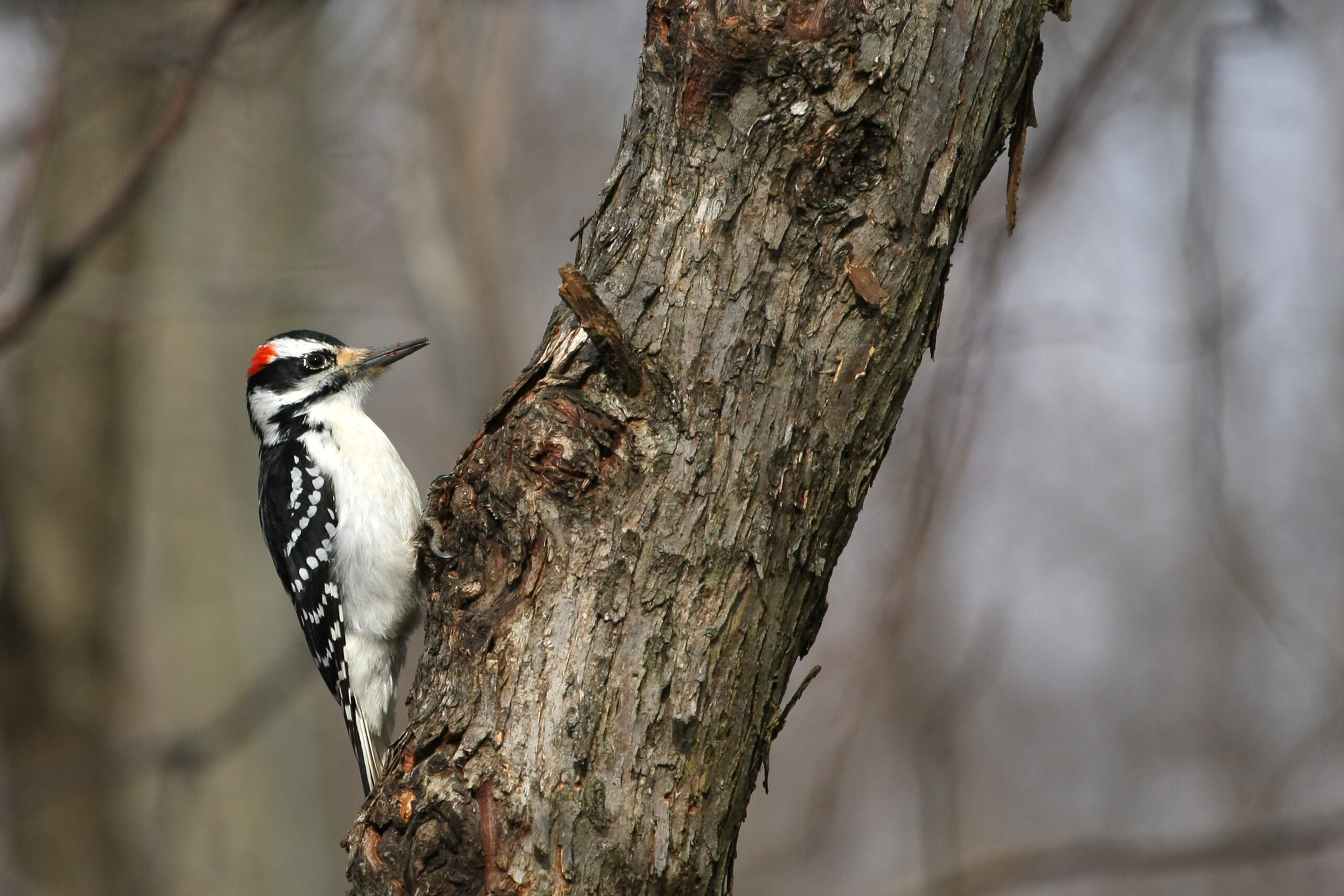 | Hairy Woodpecker |
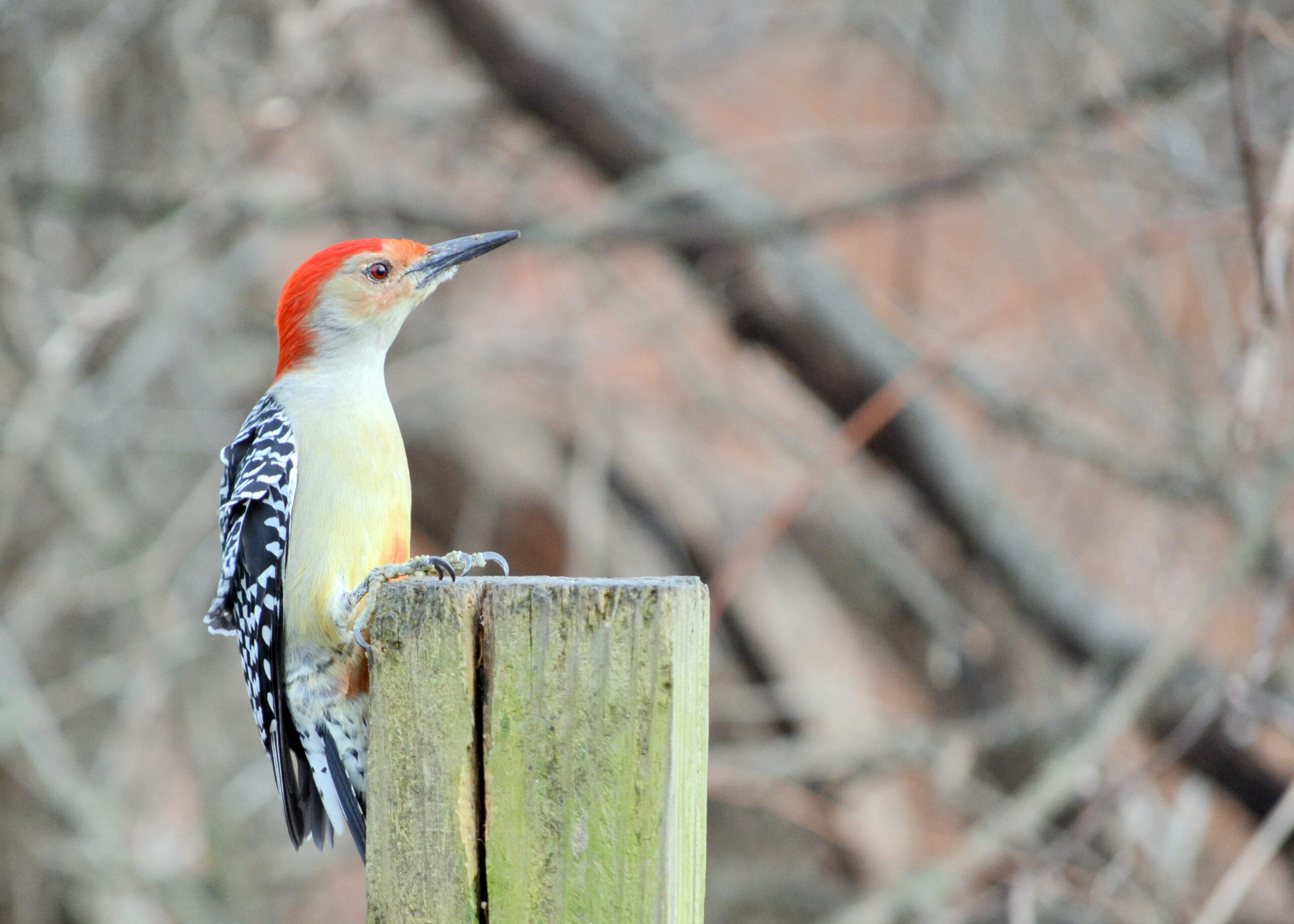 | Red-Bellied Woodpecker |
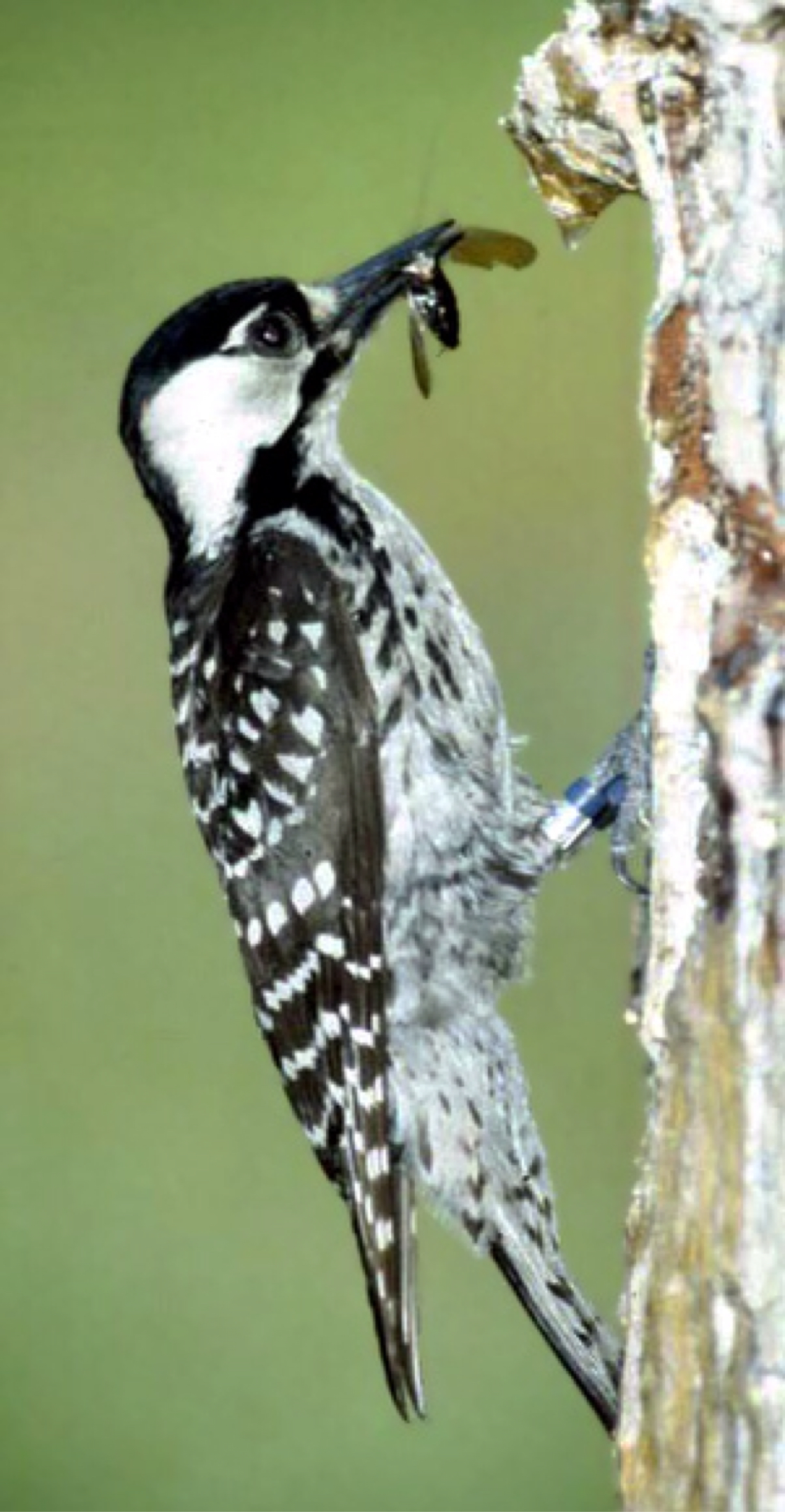 | Red-Cockaded Woodpecker |
Different Species of Woodpeckers in South Carolina
1. Northern Flicker

Northern Flickers are prevalent in South Carolina throughout the wintertime. They have been found on 17 percent of state checklists.
The majority of Northern Flickers move back towards Canada during the summertime, and these woodpeckers are only seen on 2 percent of checklists.
Northern Flickers are big brownish woodpeckers featuring black-spotted feathers and a white spot on their back during flight, as well as a reddish nape of the neck in adults.
Based on where they come from, Northern Flickers possess red or yellow flashes across their wings and tail. The western part is home to red-shafted birds, whereas the eastern is home to yellow-shafted birds.
Range
They may be found across the United States and Canada, although those that breed within Canada travel southward for the winter. Northern Flickers possess a high shriek along with a loud ringing sound.
Food
These woodpeckers build their nests within tree openings and deposit 5 to 8 whitish eggs. They mostly consume ants, beetles, fruits, and seeds and may frequently be observed scooping them up using their bent beak.
Northern Flickers are huge woodpeckers. Therefore, their pounding is louder than that of other woodpeckers.
These woodpeckers also produce a lengthy call that sounds somewhat like ‘flick – flick – flick.’ Northern Flickers are commonly found in open woodlands, forest borders, parks, and suburbia.
These woodpeckers are frequently found looking for food on the ground.
2. Downy Woodpecker

Downy Woodpeckers remain the 2nd most frequent woodpecker throughout South Carolina during the summer and winter. Bird watchers include them in 24 percent of summer checklists as well as 29 percent of winter checklists.
The Downy Woodpecker features black and white striping on its back, predominantly black, and a whitish patch. Male woodpeckers have a red spot on the rear of their heads as well.
Even though it looks comparable to the Hairy Woodpecker, it is one-third smaller and possesses a shorter beak than other woodpeckers. Because they are more frequent, you are more likely to observe a Downy Woodpecker at feeders.
Range
Downy Woodpeckers are prevalent across the United States and Canada. These woodpeckers are not found at Canada’s southern or northern borders with Mexico.
They emit a high-pitched pik tone and a falling whiny cry and are quite active, making them entertaining to watch. Downy Woodpeckers build their nests in decaying tree holes and lay 3 to 8 tiny (0.8 inches) white eggs.
Food
Downy woodpeckers mostly consume insects, particularly caterpillars, nuts, berries, acorns, as well as cereals. They are occasionally spotted sipping from hummingbird feeders.
The most abundant woodpecker is this Downy Woodpecker. They create a little softer pounding sound, allowing you to distinguish more of the single beats compared to the Hairy Woodpecker, which they resemble in appearance and sound.
They are usually spotted at feeders and may be spotted in open forests and parks, gardens, and lawns. They are also visible among towering weeds.
3. Pileated Woodpecker
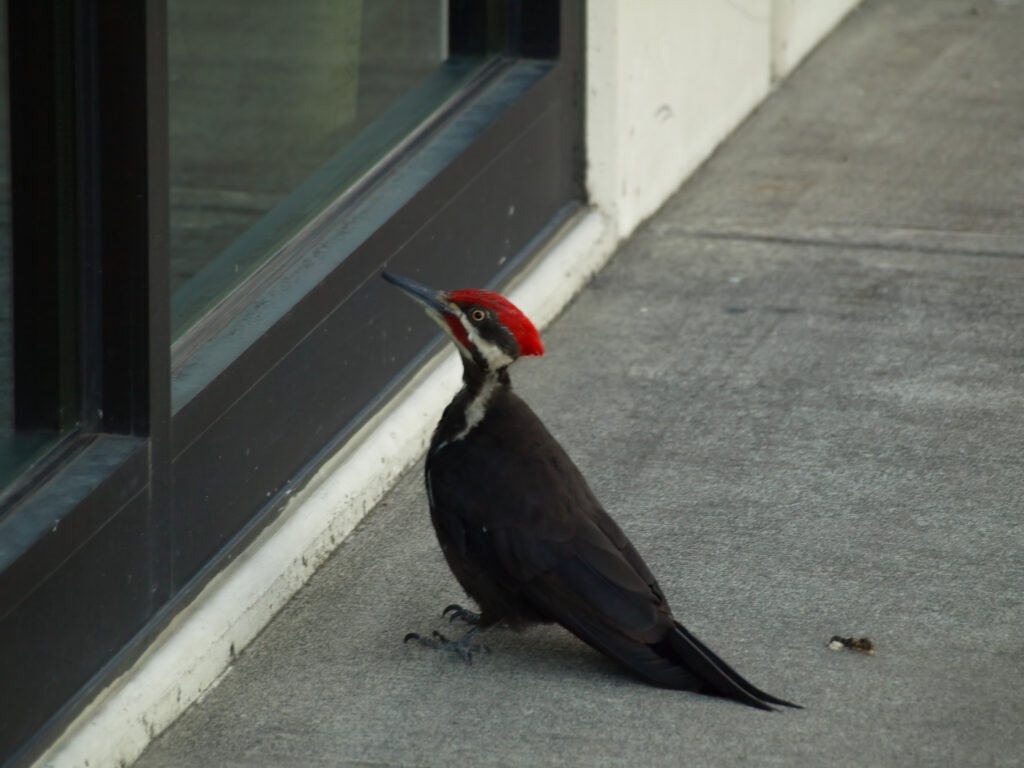
Pileated Woodpeckers happen to be the third most common woodpecker across South Carolina throughout the summer. While they appear on roughly 12 percent of checklists during both summer and winter months, the winter woodpeckers traveling into the state push them to fifth place.
The Pileated Woodpecker is indeed the largest Woodpecker throughout North America, and it stands out with its flaming-red conical crest.
It is among the largest woodpeckers, almost the proportions of a crow. It is predominantly black, having a white streak, and the white bottom of the wings may be observed while flying.
Males feature a second red stripe on their cheek. They spend the entire year throughout Eastern US, Canada, including Northwestern US regions.
Food
Pileated Woodpeckers primarily consume carpenter ants off decaying trunks and collapsed logs, but these birds also consume insect larvae, ants, and other bugs, and also fruit and nuts, including blackberry, sumac berry, dogwood, and elderberries.
These woodpeckers emit a harsh, whinnying noise as well as a deep, booming thumping. Pileated Woodpeckers utilize old trees as nesting spots, and they normally build a new one every year. Thus, other birds frequently use the previous one.
They usually deposit 3 to 5 white eggs. Because of their size, Pileated Woodpeckers beat loudly and boomingly. They are often encountered in mature woods or flooded forests with many dead trees, although they will sometimes visit home feeders, particularly for suet. They leave characteristic rectangular perforations across the trees.
4. Red-Headed Woodpecker
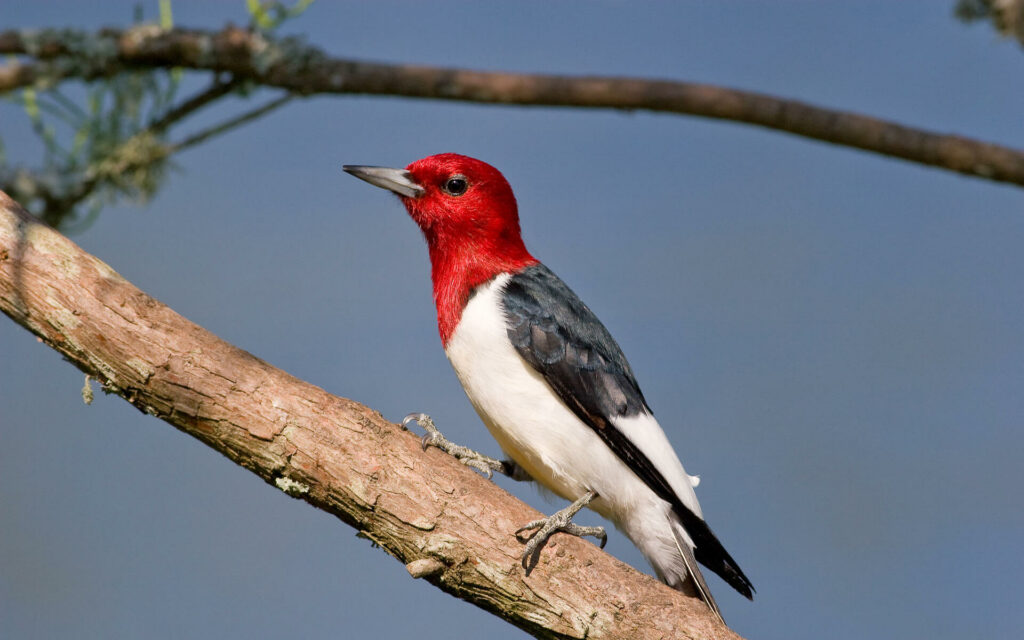
Red-headed Woodpeckers constitute the fourth most frequent woodpecker throughout South Carolina all across the summertime. These common woodpeckers are present throughout the year but are most prevalent from October to April.
Red-headed Woodpeckers have been found on 7 percent of South Carolina checklists in the summertime and 5 percent in the winters.
These woodpeckers are easy to distinguish due to their brilliant red crowns with black and white strong patterns.
Red-headed Woodpeckers have moderate-sized spike bills. These woodpeckers have shorter tails and white lower parts, black backs, and huge whitish bands on their wings.
Range
Red-headed Woodpeckers are widespread throughout the eastern and central United States, as well as southern Canada. Those near the range’s northern and eastern parts may move further eastward or southward based on acorn yields.
They may strongly protect their territory, including stealing or damaging other species’ or ducks’ nests. Red-headed Woodpeckers, similar to other woodpeckers, may grab bugs while flying as well as in cracks.
Habitat & Food
Only around one-third of their food consists of bugs, including beetle, moth, honeybees, and locusts. The remaining two-thirds are vegetative materials, including grains, nuts, and berries. Red-headed Woodpeckers may also steal hatchlings or eggs from other species and, on occasion, rodents.
They may be encountered in vast woodlots, farmland, wetlands, and pine savannas. They occasionally attend backyard bird feeders. Red-headed Woodpeckers frequent backyards in search of suet. Red-headed Woodpeckers have a harsh cry and deposit 4 to 5 white eggs throughout tree cavities, often revisiting a site.
5. Yellow-Bellied Sapsucker
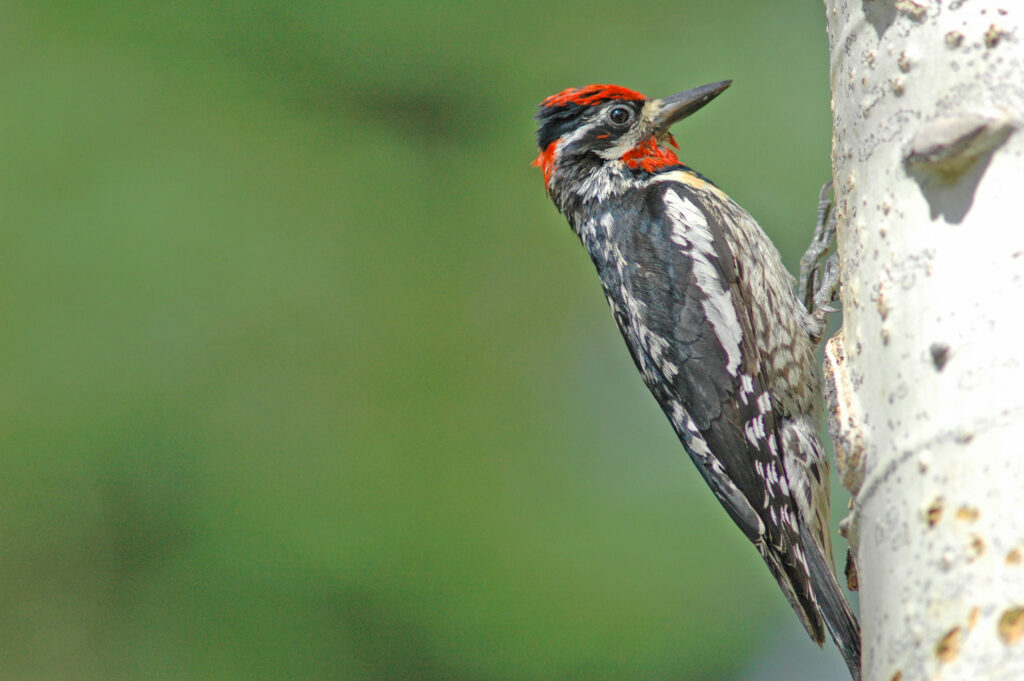
Yellow-bellied Sapsuckers are yet another woodpecker that spends the wintertime throughout South Carolina, and these woodpeckers are the third most prevalent at this period of the year.
They remain in the winter months before migrating to Canada for the mating season. These woodpeckers come in late October and depart in late March or early April. Yellow-bellied Sapsuckers appear on more than 17 percent of bird observers’ winter checklists across the region.
Yellow-bellied Sapsuckers are little, around the proportion of a robin. They are primarily black, featuring red foreheads as well as a crimson throat on the male.
Range
After reproducing during the summertime, they move from Canada and the northeastern US regions to spend the winters across the southern United States and Mexico.
Watch for clean sets of perforations in horizontal rows among immature trees. To keep the sap flowing, the holes that these woodpeckers dig must be kept clean. They have a high mewing cry, breed in tree holes, and lay 5 to 6 whitish eggs.
Habitat & Food
Young deciduous woodlands are frequently seen on birch or maple trees, where they form orderly rows of sap wells to feast on. Yellow-bellied Sapsuckers, which are rarely seen at bird feeders, will occasionally visit for suet.
6. Hairy Woodpecker
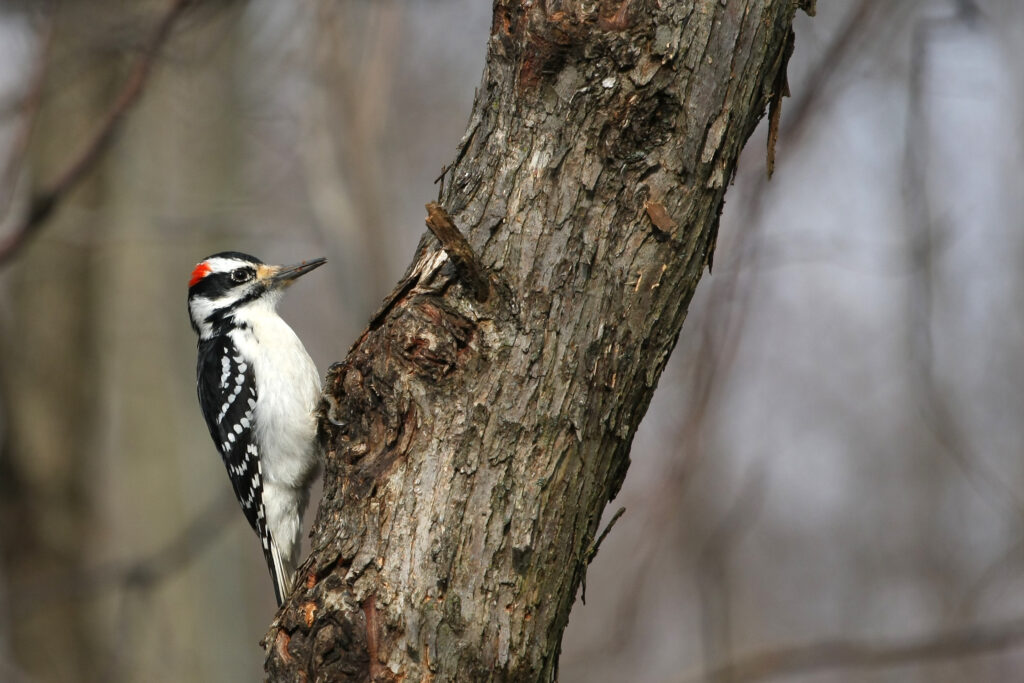
Hairy Woodpeckers aren’t abundant in South Carolina, although they may be seen throughout the year in the state’s woodlands.
Hairy Woodpeckers are moderate-sized woodpeckers featuring a black and white design across their backs and a huge whitish patch. The male woodpeckers have a reddish flash on the rear of their heads.
Hairy Woodpeckers resemble Downy Woodpeckers in appearance, although they are bigger and possess a longer beak. It is difficult to distinguish these woodpeckers since they are frequently seen in the same regions.
They may be discovered in every state in the United States, as well as much of Canada & throughout Mexico. They are strong tiny birds that produce a whinnying noise or exploding peak sounds and can be observed at backyard feeders.
This woodpecker builds its home in the hollow of decaying trees or wood fragments and lays approximately 3 to 6 white eggs. This Hairy Woodpecker’s drumming sounds comparable to the Downy Woodpecker’s, although it is quicker and the separate beats are not as distinct.
Habitat
Hairy Woodpeckers may be discovered in forests on the trunks or major branches of big trees, but they’re also located in a range of settings such as woodlots, gardens, and cemeteries.
7. Red-Bellied Woodpecker
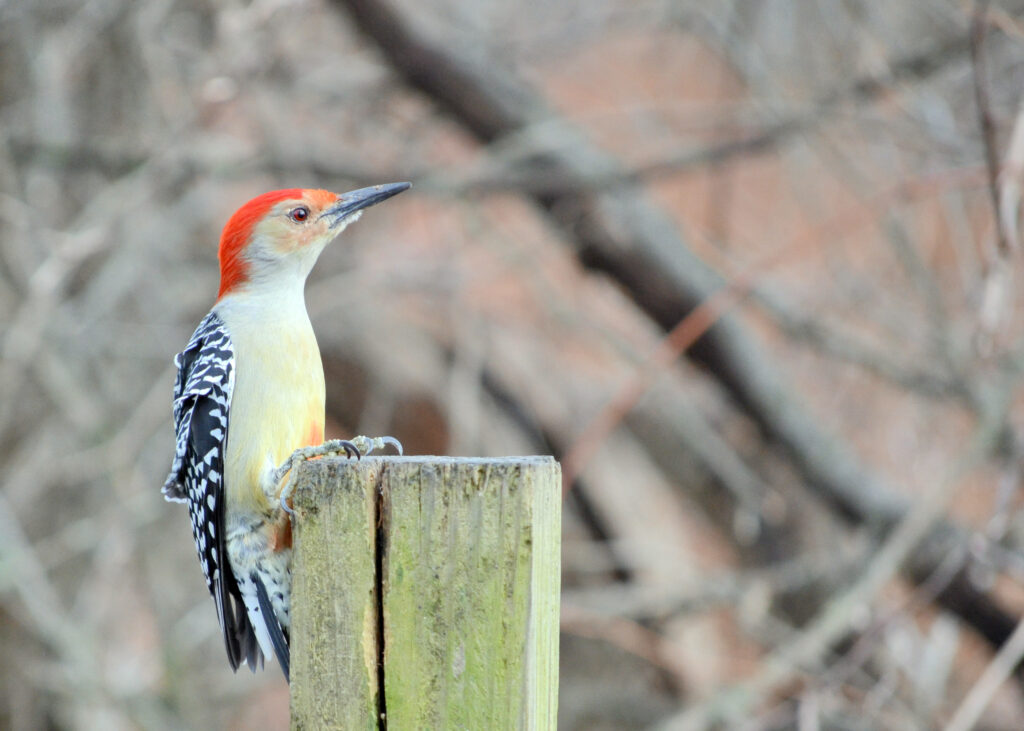
Throughout the year, the most widespread woodpecker observed within South Carolina is none other than the red-bellied woodpecker. These woodpeckers have been found in almost 35 percent of the state’s checklists.
Because these woodpeckers have red crowns, Red-bellied Woodpeckers are often confused with Red-headed Woodpeckers, although they are considerably shorter. Female Red-bellied Woodpeckers possess no redhead and just reddish napes.
These woodpeckers have a faint red underbelly that is difficult to see, but they feature the classic black and white patterns on their back sides.
Range
Red-bellied Woodpeckers are located in the eastern United States and are not migratory. Red-bellied Woodpeckers can be frequently spotted at bird feeders, particularly if you live anywhere near forested regions.
They have a characteristic booming rolling cry, so you will frequently hear these woodpeckers before you can see them.
Food
Red-bellied Woodpeckers feed on bugs, spiders, grass grains, berries, and nuts. These birds will also consume nestlings on occasion. They build their nests on decaying trees and may utilize the same one season after season. They deposit 4 to 5 whitish eggs upon a bed of wooden chips.
The tongues of the Red-bellied Woodpecker are barbed at the apex and hang out two inches beyond the beak, accompanied by viscous spit. This aids in the capture of food from deep holes. They create a loud cry and beat against trees at a rate of around 19 strokes each second.
Red-bellied Woodpeckers are widespread in eastern forests and woodlands, but they can also be found at bird feeders.
8. Red-Cockaded Woodpecker
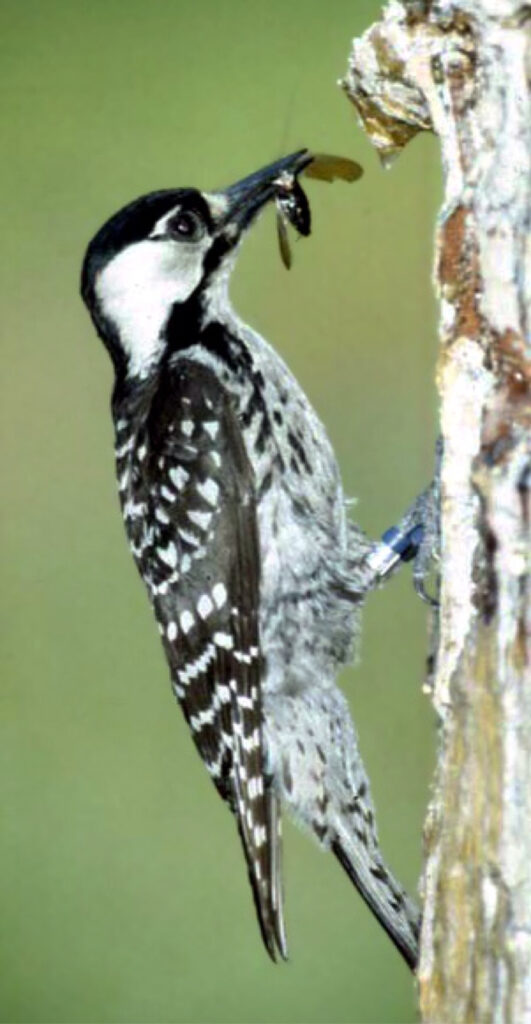
Red-cockaded Woodpeckers, relatively uncommon throughout South Carolina, have been sighted at various natural bird habitats.
Red-cockaded Woodpeckers are vulnerable to extinction and barely robin-sized, making them difficult to notice. Their backs are striped in black and white, and they are lighter beneath with big white cheek spots. Male woodpeckers have a practically imperceptible crimson stripe on the inside of their cheeks.
Red-cockaded Woodpeckers maintain a restricted distribution throughout the southeastern United States. Red-cockaded Woodpeckers are currently threatened due to habitat degradation caused by the harvesting of ancient longleaf trees, with an 86 percent fall in population since 1967.
Food
In flocks, they hunt among pine trees, eating bugs and larvae, including ants, beetles, and especially centipedes.
They will also consume pine nuts, wild blackberry, blueberry, and grapes. The Red-cockaded Woodpecker builds its nests among pine trees that have been weakened by a fungus.
They deposit 2 to 5 whitish eggs and dig sap wells under the nesting cavity to prevent predators.
In case you live anywhere close to pine forests, Red-cockaded Woodpeckers can be drawn to your backyard by food, including blackberries. Plant natural berry-producing plants like grape, bayberry, hackberry, or elderberry.
Conclusion
As you can see in our article on woodpeckers in South Carolina, South Carolina is residence to more than just a few birds; it also has a plethora of biodiversity, including eight kinds of woodpeckers.
However, this is simply the tip of the iceberg; there is much more to learn regarding the birds that are migratory across South Carolina.
It’s a popular hangout for many of our feathery companions.
We hope that this article on woodpeckers in South Carolina will prove to be useful to you.
FAQ
What does a South Carolina woodpecker look like?
South Carolina is home to the Downy as well as Hairy woodpeckers. They appear to be physically identical. The conventional field identifying clues are the total size as well as bill size.
The black and white plumage pattern of the Downy is similar to that of the substantially bigger Hairy Woodpecker.
Is it rare to see a woodpecker?
Even though their appearance and habits vary, the majority of these species are common and easily encountered. While many woodpecker species have thriving numbers, none are immune to human challenges, which vary from loss of habitat to hazardous chemicals.
Last Updated on March 22, 2023 by Lily Aldrin
